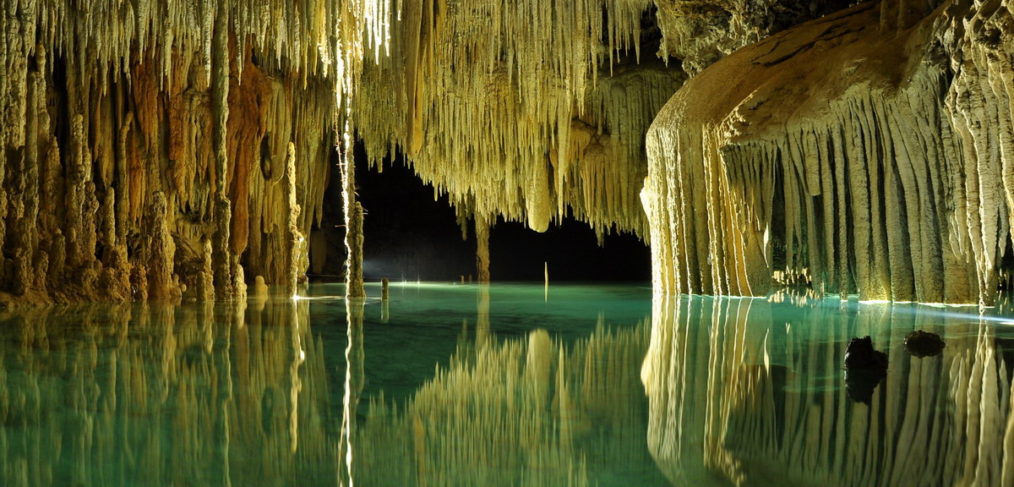
The underground world of Rio Secreto
Named National Geographic’s top 10 places to visit in the world
When we saw Rio Secreto on the National Geographic channel, we were skiing in Idaho, surrounded by snow. The show said Rio Secreto was one of the top 10 places to visit in the world (this was four years ago) and it was the reason why we decided to visit the Yucatan Peninsula in the first place.
Hundreds of cenotes exist in the Yucatan Peninsula, more than one could visit in a lifetime. A cenote is a waterway that’s either partially or wholly covered by rock. The cenotes are fresh water, some stretching hundreds of miles, making their way other waterways and to the ocean. About ten years ago, a farm watched a stretch of his land give way, revealing a secret river underground. Explorers converged, confirming that the area now called Rio Secreto, (secret river), the first and only known cenote that is 100% underground.
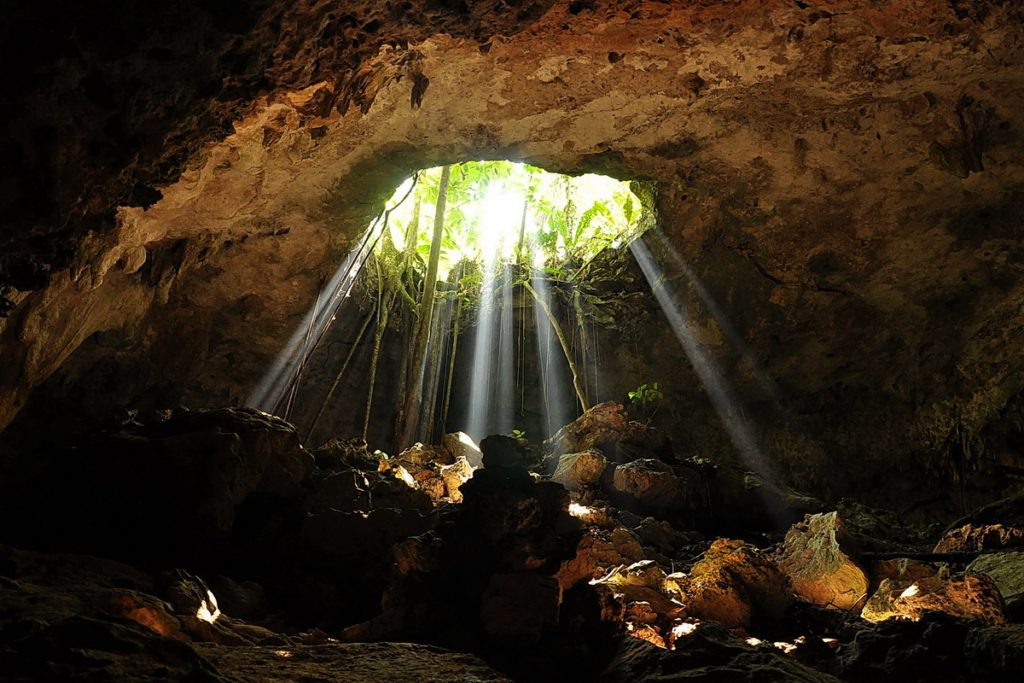
As you descend, you will see a few of the openings around the cenotes, so the guide will provide lots of warnings
Since the area is Mayan ancestral land, the government made a deal with the farmers (because the area is so big, multiple farmers are involved); the Mayans continue to own the land but will lease it to the government. After lots of exploration, the area was ultimately opened to the public. I’ve got some great news for you, along with bad. The good news is that it’s an incredible experience to be in the dark for hours, seeing animals, feeling the soft sand and water, and taking beautiful shots. The bad news is that in the last four years, it’s become so commercialized, it feels more like ants underground, stuck in a tunnel with other tour groups coming and going.
Reservations
If you use the concierge at your hotel, you are going to pay a premium of about 30%. That doesn’t necessarily include transportation, so watch out for hidden fees. You can go to the on-line booking center and save the money.
Getting there
Pictures are worth more than my thoughts, so I’ll start with the basics. You arrive at the main entrance, about an hour south of Cancun proper. By cab, rental car or bus, it’s a straight shot, only a single right turn off the freeway. In the last three years, the price has increased from $65 to $95, pretty steep. The first time we thought it a bargain, the second time, not so much. This last visit we were grumpy about it, but still went, because 7 routes are available, and we’d only seen two. A bus will run you about $40 depending on your starting point.
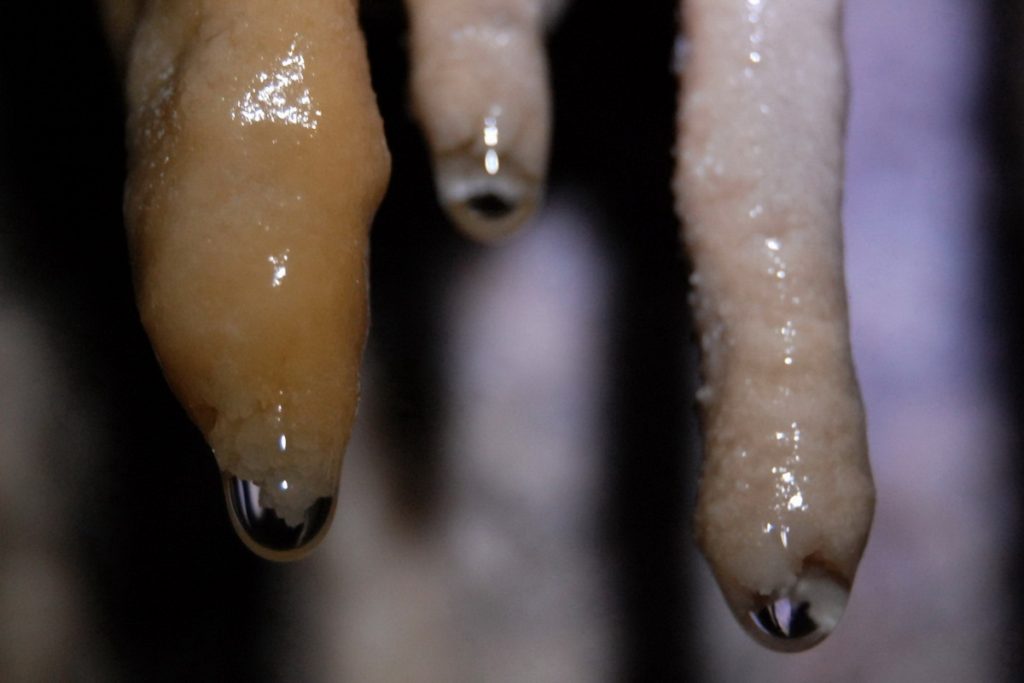
No, not worms, but water hanging at the end of the crystalized rock formed over millions of years
The process
You arrive and wait for those in your group. The area is shaded, and one of the new additions (this year) is a small deli, just in case you are hungry. That said, once you are in your wetsuit (required), you can’t use the bathroom for 2 hours, so relieve yourself first, or you will be in a world of hurt.
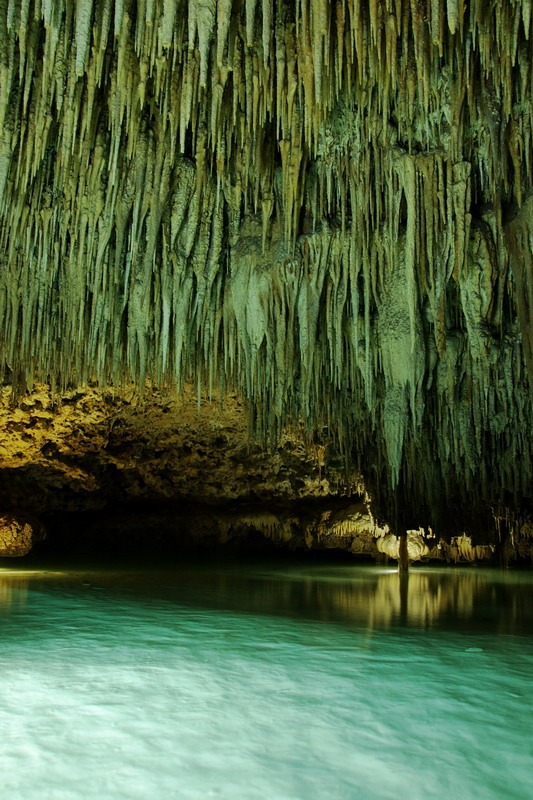
Photographers tip: use the flashlight, put it under the water and then you have this effect
You are assigned a tour guide and photographer who gives you an idea of what is to come. First, everyone loads up in a bus which holds about 7-10 people, and what follows is a 15-20 minute drive on white, dirt roads to the actual cenote center. Once out, you are show the locker area, where you put on your bathing suit, or whatever you are going to wear under the wetsuit. Women and men have separate changing areas, but no inside showers. You are given water socks, and they require you wear shoes a size too small, because they don’t want you to slip. The rocks and underground trails are rather slick. That said, I made the mistake of listening to them once year, and suffered in misery for two hours. The next two times, I refused to wear smaller water socks, and just used my normal size.
Next, the group (of between 10-15) is led to an outdoor showering area, which means you stand under an outdoor shower, pull the wooden handle, and get sprayed with seriously cold water. One by one, you walk to the next station, which is the wetsuit area. (do you how hard it is to put on a wetsuit when wet? Nearly impossible. So, if you are uncomfortable pulling up a wetsuit over a sticky, wet body, you will need to get over it.
After this, you select a lifejacket that goes over your wetsuit. Imagine yourself with the water socks, wetsuit and now lifejacket, but wait, there’s more. You also don a hard hat with a light, and it has three modes; red, high and low. The tour guide will identify when to use what, and requires you listen and do what’s requested, or the tour group can’t move on.
Just before the tour starts, the guide pauses, the photographer stops and takes a picture of the group, who by now, are all sweating, even in the shade. (I took a moment to pet the pitbull lounging under a tree).

On the way to the cenote are all sorts of bizarre plants
Photo taken, we are counseled to pick a walking stick, which we later learned was useful in determining the depth of the water, and if a rock existed (or not). On my third trip, I slipped, fell forward and cut my knee. Darn thing left a scar, because I’m always resting on it and kept ripping it open. Guess I should have used that walking stick!
Almost ready
Depending on the which cenote is chosen for the tour, the walk is between fifteen and twenty minutes. You are in the effort about forty-fifty minutes by now. You have one more stop to make before you descend into the darkness, and that’s the blessing by a shaman priest. This is non-negotiable. As you stand in a semi-circle, the priest moves his smoking device up and down across all the individuals as the man speaks in his native tongue.
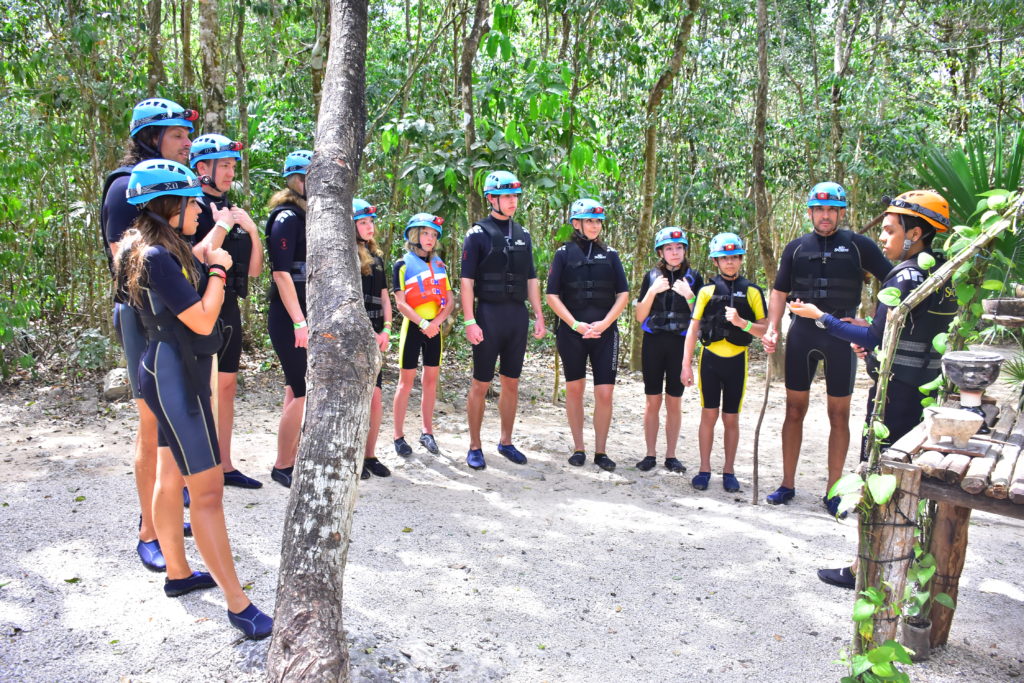
The shaman isn’t pictured in this photo, but his stand of ash, which gets on you, is to the right
Now we have another walk to the cenote, and all the while, the group is getting to know one another and the tour guide is dispensing information. Year one, we were spoiled; we had a graduate student of geology from the University of Mexico, who was a vault of information. Hanging bee hives, the trees, stones…you name it. Then we reach the actual entrance and down you go.
Underground ease
Each entrance and exit is different, some with a handrail or two, but most without. It’s pitch black as you are then led beside and in to the waterways, tunnels and lakes. The first time, our girls were six and 10, but they are hardy, adventurous and tough. Two hours in and out of warm water, even with a wetsuit, can be tough for anyone. At the end, my youngest was a little chilled, but fine. I’d definitely say any younger than that wouldn’t be advised.
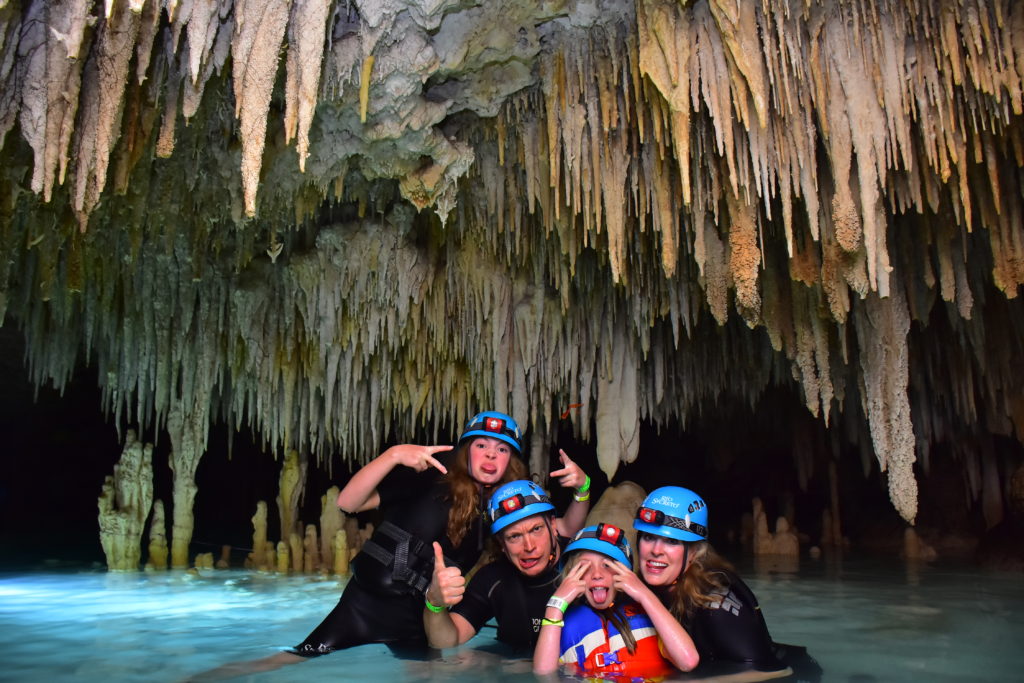
Everyone at their finest
The time spent underground is nearly fifty minutes—but that reminds me of another rule. No watches or jewelry are allowed, which is mandated to preserve any toxins from getting into the ecosystem. Wedding rings and that’s it. No picture taking/cameras are allowed either, unless you have special permission, which I was granted once, then never asked for again (and I probably got this because I’m an author). Honestly, it’s a lot easier to have their group take the photographs and just enjoy the experience.
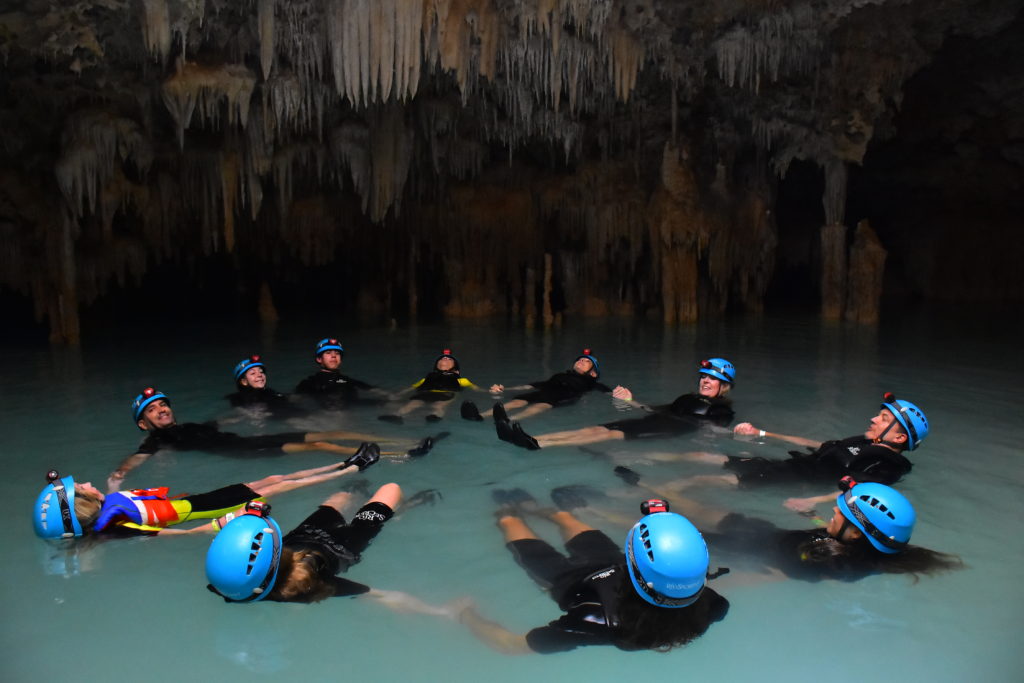
Taken just before the lights went out
Cleaning up, eating and returning
Once the tour has finished, we walk back, strip off the jacket, suit and shoes, take a shower, then drive back to the center area. Lunch is included, which is a buffet, open all day long. It’s actually quite nice, and one of the few benefits of the expansion, because it’s cool and well appointed. After that, you pay for the CD of the photography. That’s going to run you another $120. Is it worth it? Yep. Unless you’ve had the photography access, the only way you can get the images is to pay for it.
What I liked most
Seeing the underground world that has existed for millions of years, and the resulting photos. My absolute favorite part of the tour was at the end, when our guide took us out to the middle of the lake, asked us to hold hands, and turn off the lights. At that point, we were quiet for about five minutes in the complete, pitch black. Never, in my life, had I been in total and utter blackness, let alone in the water. It took about a minute for the group to get quiet, but after that, it was complete peace. wow.
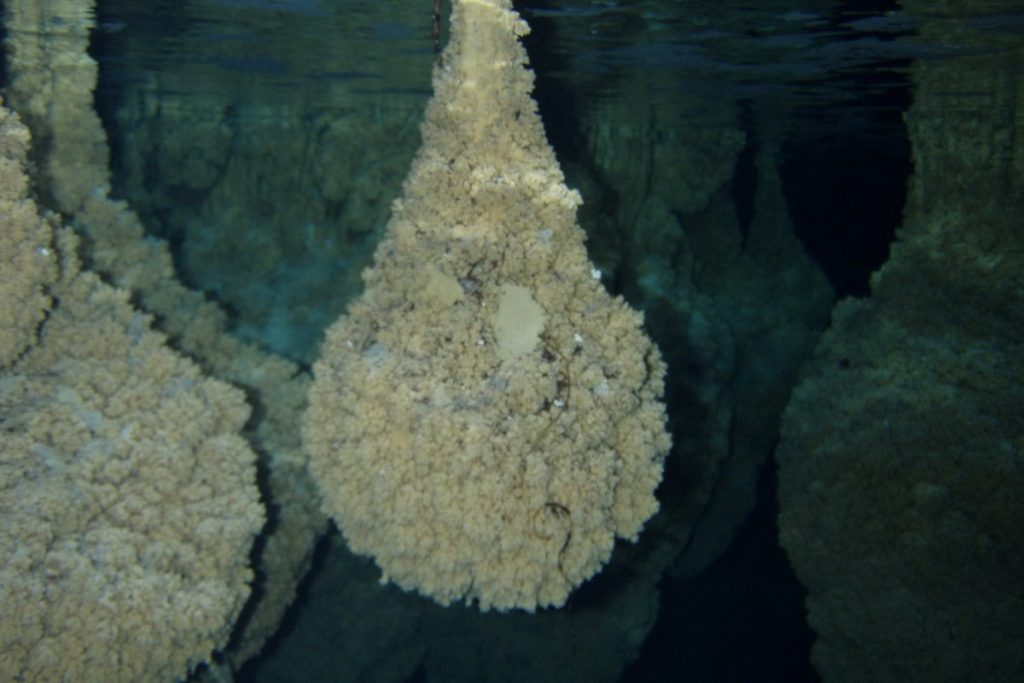
My apologies for not recalling the names of these formations–but it looks like an upside down beehive doesn’t it?
What I liked least
The crowds and commercialization have destroyed this place in my opinion. The first two times, they’d limited the tours to one at a time, per cenote. Now, we had four, count them four, different tours going at the same time as ours, so you didn’t get the feeling you were alone, exploring a new universe. It was more like the devil’s version of purgatory. It’s the classic example of destroying something that was perfectly wonderful and unique. Also, the last time, the experience we were hoping to have again (the five minutes of complete quiet in the black), was reduced to about a minute. So. Grumpy. (Management, are you listening??)
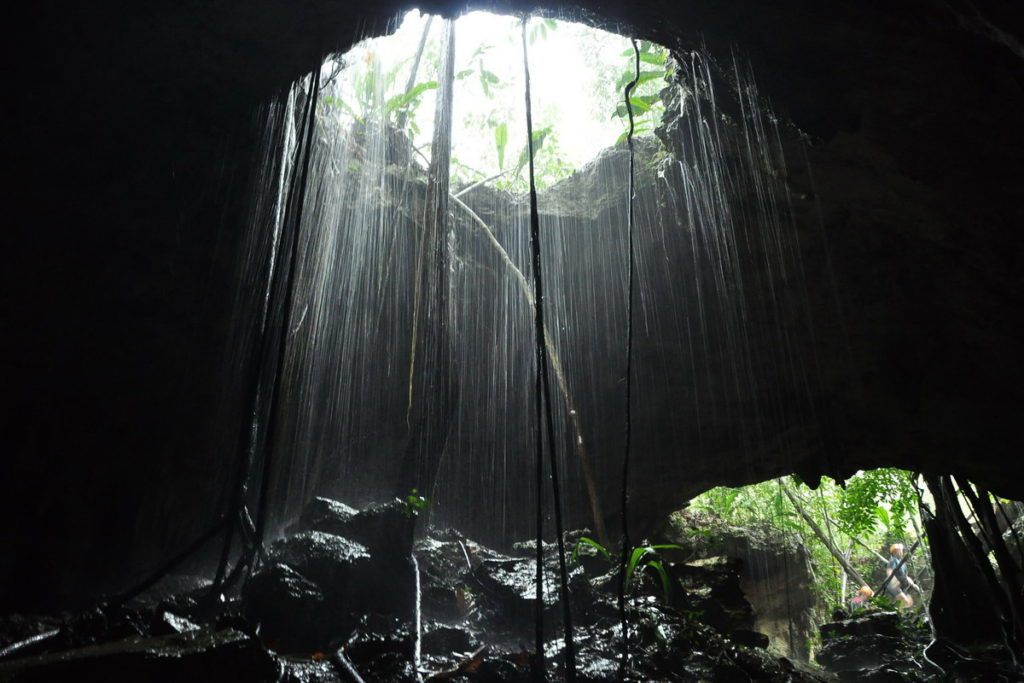
Would I go, and can I recommend it to you?
Yes, with the caveat that if you’ve gone before, it’s changed, and for the worse. BUT, if you’ve never gone, I do think it will be quite an experience for you, and your children unlike any other, even with the additional tour groups.

Nope, not eggs, but more great formations created only deep underground
Oh! If you don’t know how to swim, please, please, identify this right up front. On our first adventure, we had three individuals from India, two of whom couldn’t swim, and didn’t say so. The identified themselves as engineers, so they were smart, but didn’t want to be refused entry. The challenge with this is that when it comes time to the lake, you can’t touch the bottom, and must swim. For those who don’t swim, as we found out, it’s an issue. Imagine being an hour deep into the underground, and two people can’t swim. My girls were great, however, and offered to hold their hands and guide them along. The two adults were floating on their backs, and we swam them across. It all worked out, but it was a word to the wise—be honest. They can handle it.
